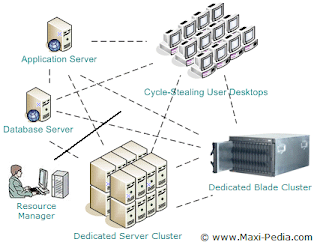The triple constraint is important to project management as it is necessary to understand as any one project will be limited by one or more of these constraints. Therefore it is necessary for them to understand the relationship in order to make intelligent trade-offs between time, cost and scope.
2. The two primary diagrams most frequently used within project management include:
- PERT chart: (Program evaluation and review technique): A graphical network model that depicts a project's task and the relationship between those tasks (e.g. Dependancy, critical tasks). A PERT chart frequently display a project's critical path - the path from start to finish, passing all the phases necessary for the completion of the task in the shortest amount of time.
PERT chart
PERT chart
- Gantt chart: Is a bar chart that depicts project tasks against a calendar. Tasks may be listed vertically while time frames are listed horizontally.
3. The three primary areas a project manager must focus on to ensure success include:
- Managing people: One of the hardest and most critical things needed to be managed. It involves resolving managing conflicts within the team whilst balancing the project needs as well as the needs of the employees (both professional and personal).
- Communication: Clear communication is vital to ensure the success of a project. It helps the team work together towards a common goal.
- Managing change to ensure success: Change is inevitable. No matter how well a project is planned or managed. It is vital to ensure that change can be seen as a challenge and not as something to ruin the project. A manager needs to be able to see change and adapt.
4. Two reasons projects fail include:
- Failure to align the project with the organisation objectives
- Unrealistic expectations
Two reasons projects succeed include:
- Strong project management with good decision making structure
- Great communication between team members









